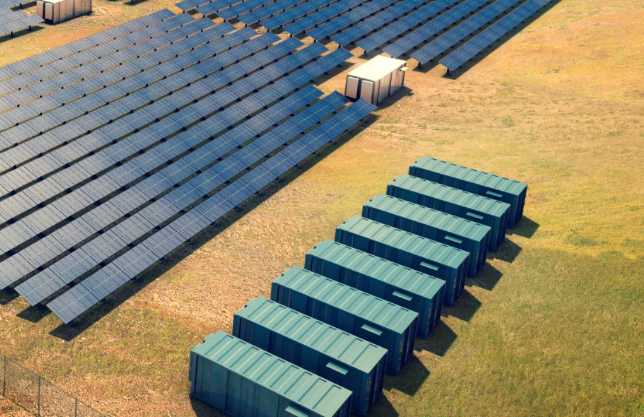
Despite not receiving funding in the Australian Renewable Energy Agency large scale solar funding round, the infrastructure company says it will build a “minimum” 100MW of solar PV paired with 100MWh of battery storage (supplied by AES) near Roxby Downs in South Australia’s north.
It says the plant will be used to help add security to the state grid which relies heavily on wind and solar energy.
The announcement is likely to be one of many following the results of the ARENA tender. As RenewEconomy has written on several occasions recently, many solar projects were waiting to see the results of the funding round, but some that did get government money will still find a way forward.
Lyon has also revealed that its second major project will be located in Lakeland, Queensland, where it plans to build a minimum 80MW and 20MW/MWh battery storage facility – ironically near another smaller project which it sold to Conergy recently.
“Battery storage really is the missing piece of the puzzle in Australia’s clean energy future, and for that matter anywhere seeking to incorporate large amounts of renewables into the energy mix. These projects will complete the picture,” said Lyon Partner David Green.
“Ultimately, with this breakthrough there is no limit to the amount of renewable projects that can be connected to the electricity grid in Australia or anywhere else in the future.”
The Kingfisher project has been well flagged and was shortlisted for the ARENA large scale solar tender, which awarded grants to 12 of the 20 projects that made the final list.
Despite not receiving any money, Lyon has decided to go ahead with the project and has also chosen to increase the size of the battery from 20MWh to 100MWh to help address the issues confronting the electricity network in South Australia.
Lyon was involved in the initial development of what will – for the moment – be the large solar plus storage plant in Lakeland, the Cook facility, which will feature 10.4MW of solar PV and 1.4MW/5.3MWh of battery storage. Now owned by Conergy, it has received funds from ARENA and attracted the interest of mining giant BHP.
“For large scale solar projects to play an important role in the future of the South Australian economy, we have to deal with the intermittent power that renewable generation produces.
“We have to translate solar into the secure and reliable source of power 24 hours a day, 7 days a week that it can be and batteries allow us to do that,” Green said.
He said a 20MWh battery would achieve that security for Roxby Downs, but at 100MWh it will not only service that industrial centre, but also improve energy security across the state’s electricity network.
“At times of need, the battery could ensure the entire state does not face outages, if the interconnector between Victoria and South Australia fails, the battery will instantaneously compensate,” MGreen said.
The Kingfisher project will be built in two stages – the first a 20MW solar PV plus minimum 2MWh battery storage and will be commercially operational by late 2017. Stage Two will include 100MW solar PV plus a minimum 100MWh of battery storage.
The Lakeland solar plus battery storage project in Queensland will also be commercially operational by the end of 2017, Green says.
“Between the two projects there will be 120MW of battery storage added to the national electricity grid. We plan to more than double that in the following year with battery projects currently in our pipeline that are yet to be announced.”
Equity has been raised for both projects and Lyon’s equity partners will be announced later this month, allowing for . construction to start on both projects in early 2017.
Green said because Australia would be leading the world in the development of this type of project, there was a huge opportunity for a modern, high tech battery manufacturing and services hub to emerge.
““We are using battery systems developed by AES, which is the world’s most experienced energy storage providers. They will deliver the units to Australia, but the batteries will need to be assembled locally, which will deliver jobs and new knowledge and expertise to Australia.”
Green says the construction of battery storage plants adjoining solar arrays means that costly upgrades to networks could be avoided. He says that it will be built quicker than any new interconnector and could mean new links are not necessary.
“Providing reliable electricity to areas on the fringe of the electricity grid has traditionally meant massive capital investment in extremely long network lines which is inefficient because of the huge energy loss and loss of energy quality that occurs when transporting electricity across those distances.










